Mk1 roadster single-speed square motor Mk1 GT round motor Mk2 2-speed round motor
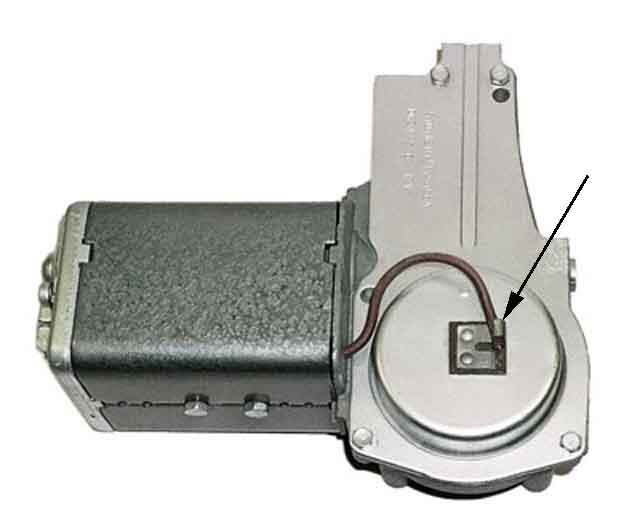
A - the parking arc, insulated from the case. B - the earthed wiper that bears on the arc and goes round with the large gear. When it reaches the cut-out in the arc the motor is disconnected, and spins down to a halt:
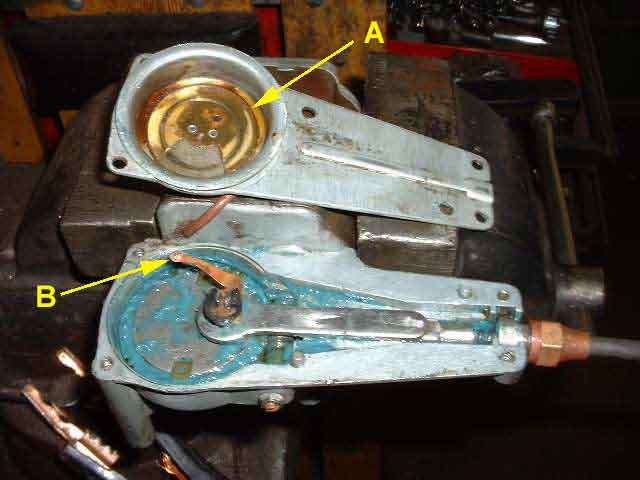
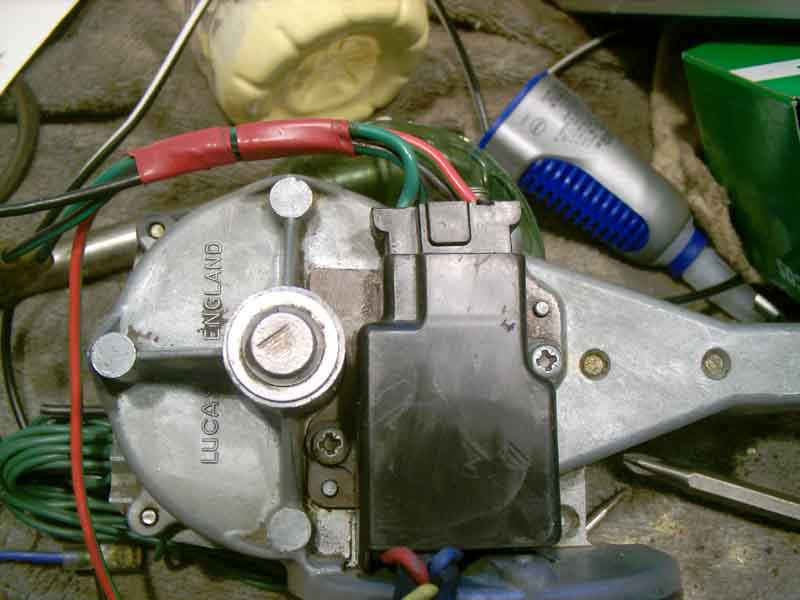
Spades on top - five pins but only four wires. The motor appears to have red, blue and yellow wires as per the Mk2 motor which implies this is also a 2-speed motor, but with only four wires (12v, earth, run and park) there is no wire from the switch to run it at the higher speed. This is probably a GEU708 2-speed motor replacing the original 27H6409 and is 'plug-compatible' but only runs at the lower speed:
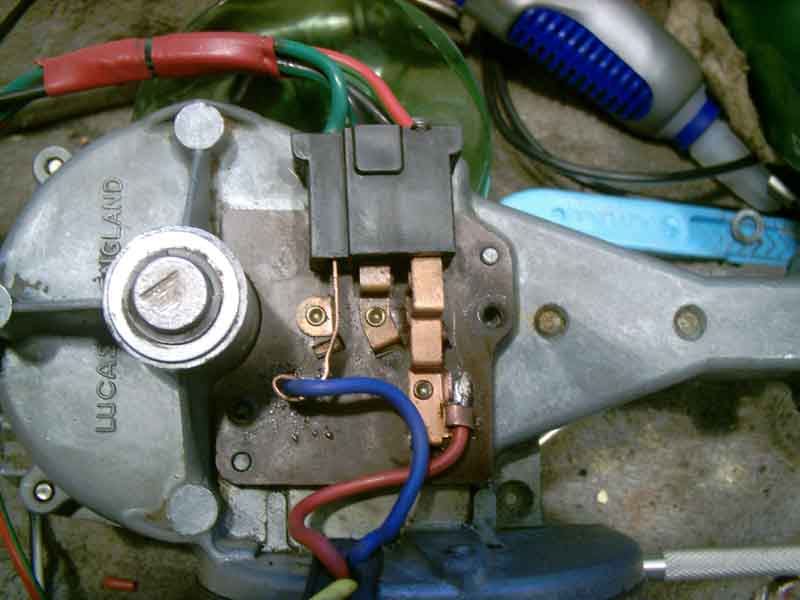
... park switch contacts underneath:
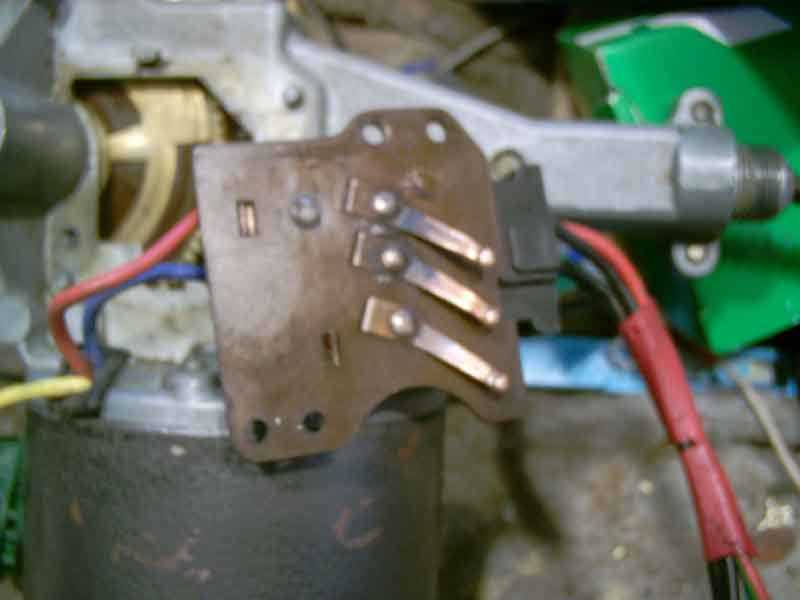
... which rub on a park switch 'commutator' on the main gear wheel. The large gear rotates anti-clockwise. Black/green to the park contact on the manual switch rides on the continuous section at A. With the manual switch off black (earth) runs on the outer section to keep the motor running until point B. The earth is then disconnected from the motor, but inertia causes it to continue to run whilst slowing down, until the green wire (12v) contacts at C, which causes the motor to stop dead. This is all from information received rather than my own examination, but the information goes on to say that when the manual switch is operated again, black reconnects at D, which would mean that earth and 12v would be connected together until E when the green is disconnected, which doesn't seem right as that should blow the fuse:
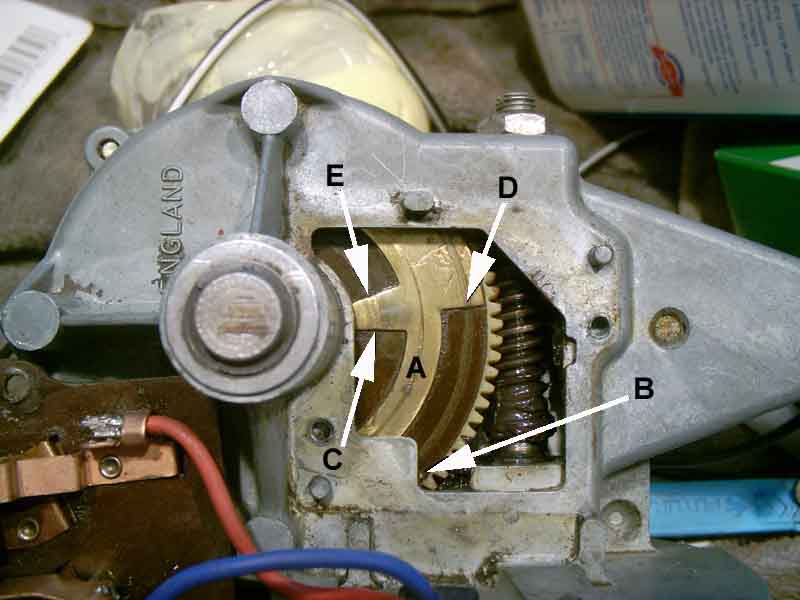
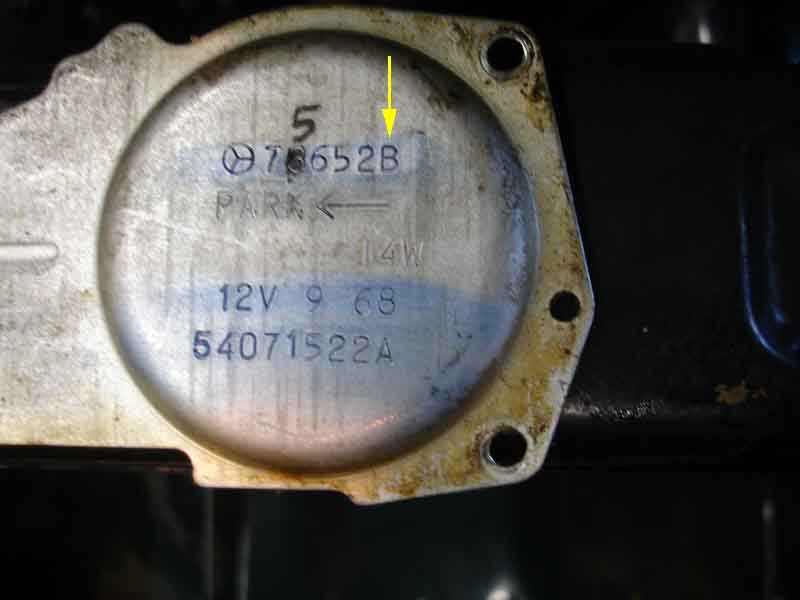
A and B suffixes had a screw-on park switch 37H 2734. Several Mini parts suppliers list and show this switch whereas none of the MG suppliers seem to: Images from http://minipassion.auto-blog.fr and http://www.datch.fr
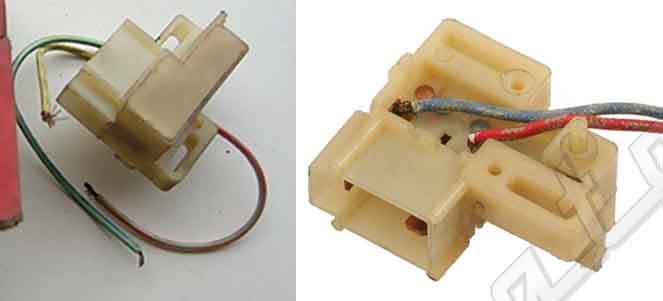
The Parts Catalogue indicates that suffix D had a different switch, but this motor with a 72 date code on my 73 roadster has an F suffix, so it seems that anything with D or later probably uses the later switch. Same 'PARK' and arrow:
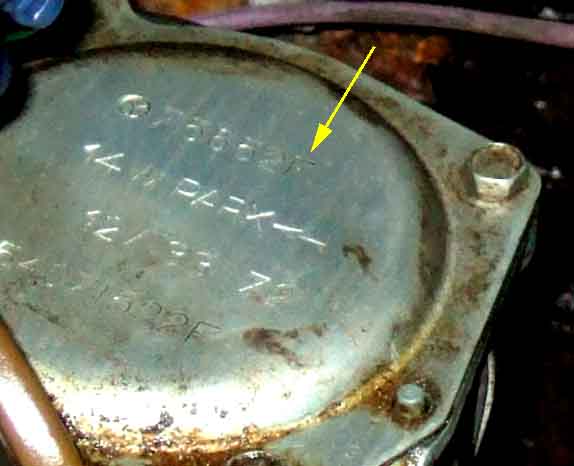
Later clip-on park switch, unfortunately both types are on the back of the motor and inaccessible when installed:
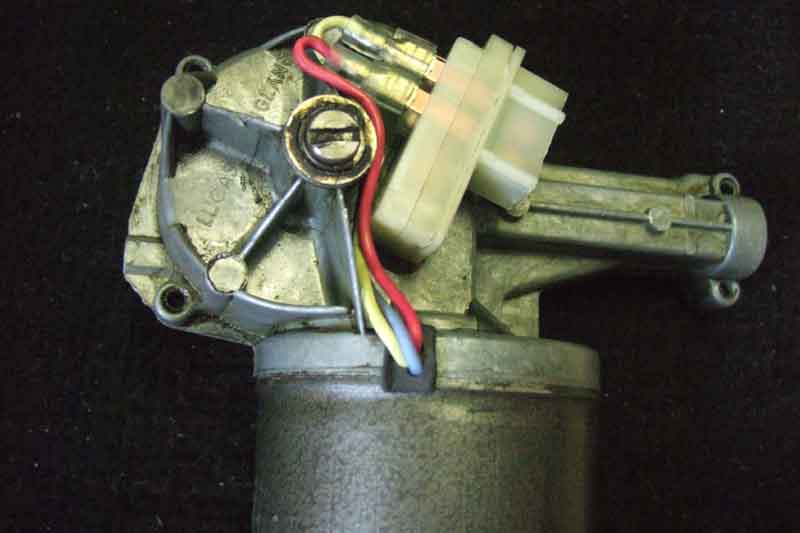
The later switch is a clip-on 37H 6784 as here. Slide the whole connector block/park switch assembly in the direction of the arrow to remove it from the motor casing:

However many suppliers show a picture of the clip-on type under the screw-on type part number, so you need to be careful when buying a replacement. Somerford Mini do seem to list the screw-on type correctly, and as the two images above also come from Mini sites they may be your best option for replacement.
Another view of the clip-on type showing the three spades for the motor brush wiring:
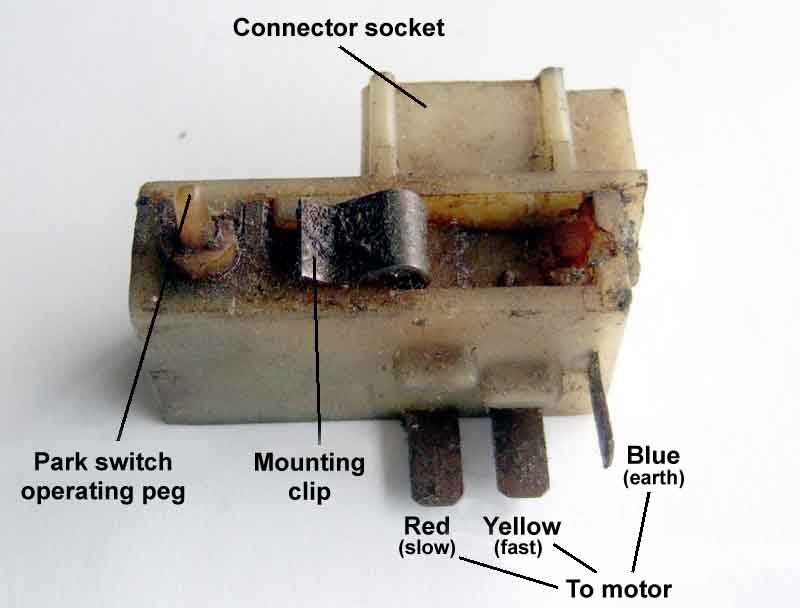
Showing the 'innards' - the park switch and its connections to the connector block and motor wiring spades. When the motor reaches the park position the cam pushes the peg in to move the park connection from the 12v connection to the earth connection:
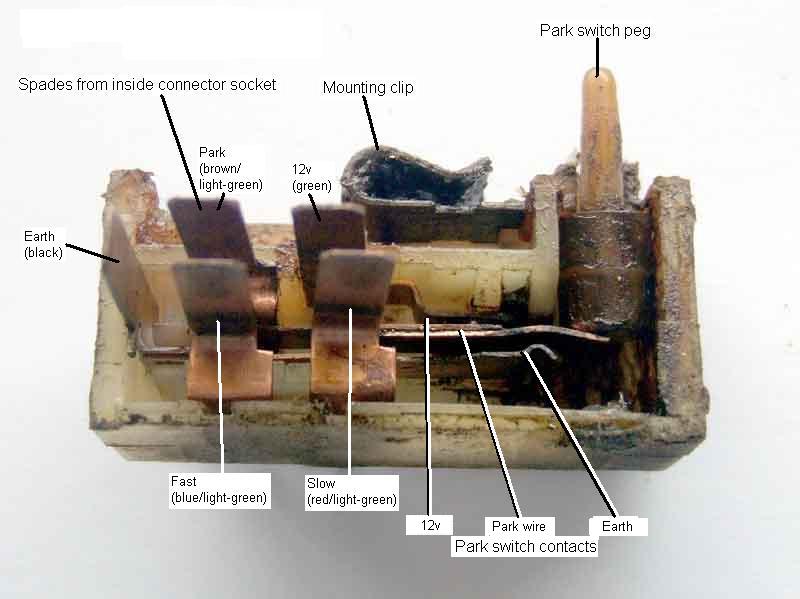
The harness plug:
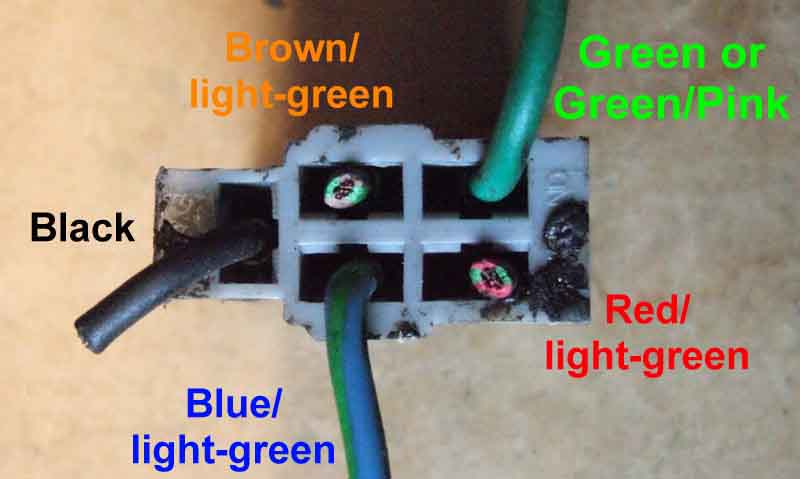
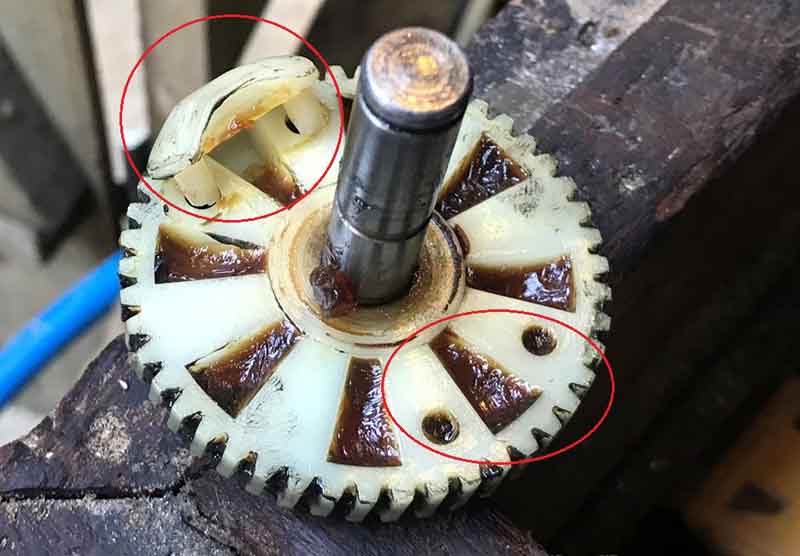
But on Geoff Thirlby's it can only be fitted in one position as there are no holes for the location pegs on the other side:
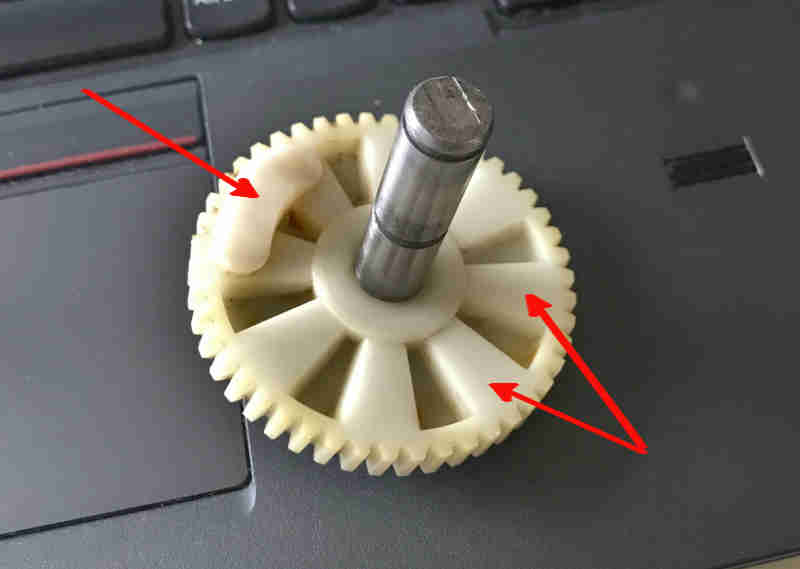
On this type the gear has to be slid out of engagement with the cam plate and rotated on the spindle 180 degrees. The '125' indicates the arc the wipers swept, as that is governed by the distance of the crank-pin from the centre of the gear. Clausager only mentions 106 degrees for roadsters and 115 for GTs, but for the 1969 model year-on all GTs had different arms and blades with a 125 degree gear:

